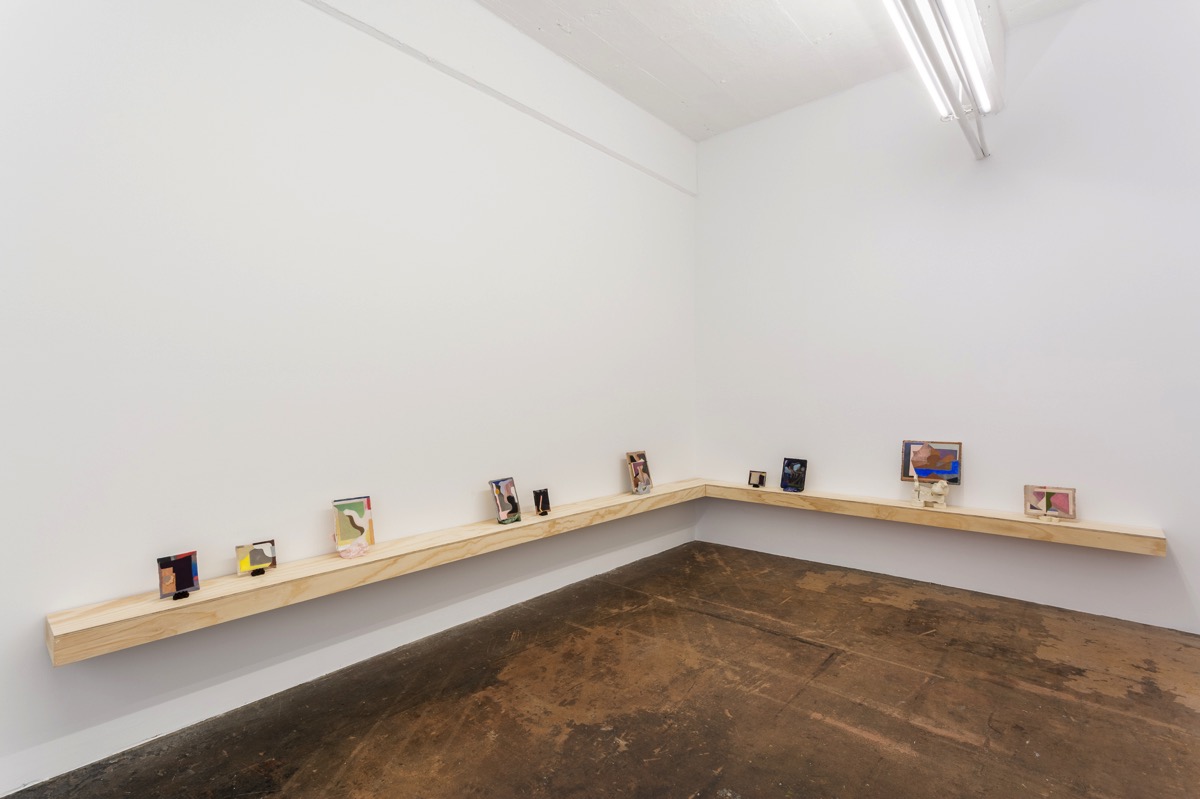Publishes,
Cuttings, Kate Tucker
(Download PDF)
By its very nature, a cutting is a symbol of new life, regeneration, opportunity and potential. When propagating plants from cuttings, a section of the plant is detached from the mother plant and placed in an environment to encourage the production of a new system of roots from which to grow. If successful, the cutting will prosper, growing into an autonomous plant, independent of the mother.
Kate Tucker has undertaken a similar process of regeneration with this new body of work. Formed through the accumulation and layering of collateral from previous works – scraps of digitally printed fabric, cut out pictures, discarded off-cuts – Tucker was interested in the process of taking something unsuccessful and reworking it to create something new and positive out of the detritus. Tucker constructed these assemblages haphazardly, focusing on liberating each element from its original context. Without a pre-conceived plan of the finished work, she worked intuitively, playfully, experimenting with composition and form and pushing her materials to operate in unconventional ways.
The result is a series of works that are visually and emotionally distinct from her previous body of work. Much lighter and finer than the recent Tablet paintings, they have shed any excess weight to appear more pared back, reduced and brutalist in form and composition, with an emphasis on negative space. The cut-out elements are arranged with minimal intervention onto a wooden board between layers of acrylic and oil paint and self-levelling gel. The layers of gel act like panes of glass, separating the materials and altering the surface textures. A resulting confusion between figure and ground creates the illusion of space and depth in a way that is unusual in abstract painting. Visual framing devices within the paintings’ compositions mirror the physical border and frames, creating the suggestion of a window. Like windows, these works allow you to look through the surface to the world beyond.
Using braided raffia – a typically low-craft material – to construct the frames, the nod to Pablo Picasso’s early foray into assemblage, Still-life with Chair Caning 1912, in which he framed the oval canvas in a length of rope, cannot be overlooked. Tucker is interested in breaking outside the boundaries of the canvas, which she does with the addition of hand-moulded ceramic and bronze elements. Through the frames and the base structures, Tucker plays with the visible and invisible support systems that uphold an object as art.
Trained as a painter, Tucker has incorporated ceramics into her practice for several years, and the ceramic elements are now taking on a greater significance and role.
Feeling constricted by painting, both physically and intellectually, her foray into using clay was motivated by a desire to reconnect with the playfulness with material that characterises children’s creativity. Recent works have experimented with displaying the paintings leaning on, or propped up by crude ceramic objects, in a way that emphasises the three- dimensionality and ‘objectness’ of the paintings. Now the ceramic objects have grown more sophisticated and resolved. Rather than two modest feet, they are now functioning as complex structural bases to hold the paintings, with the character- like forms that the bases take almost unintentionally emulating shapes in their partner painting. Significantly, this is the first body of works that has completely moved off the wall, and all of the paintings are paired with a support structure of ceramic or bronze. No longer complete on their own, the paintings yearn for their partner, their counterpart.
While still continuing her ongoing investigation into abstraction, one senses that there is a lot more of the artist in these works. Displayed at Bus Projects on constructed shelves that run along three of the gallery walls, the presentation mimics that of the artist’s studio. Placed low to the ground, the works have stepped down from their pedestals and take on a human presence. Arranged into small groupings or families, the paintings and their bases sit together, balanced and paired, holding and supporting one another.
Laura Couttie
2017
Kate Tucker
Cuttings
2.8.17 - 26.8.17
